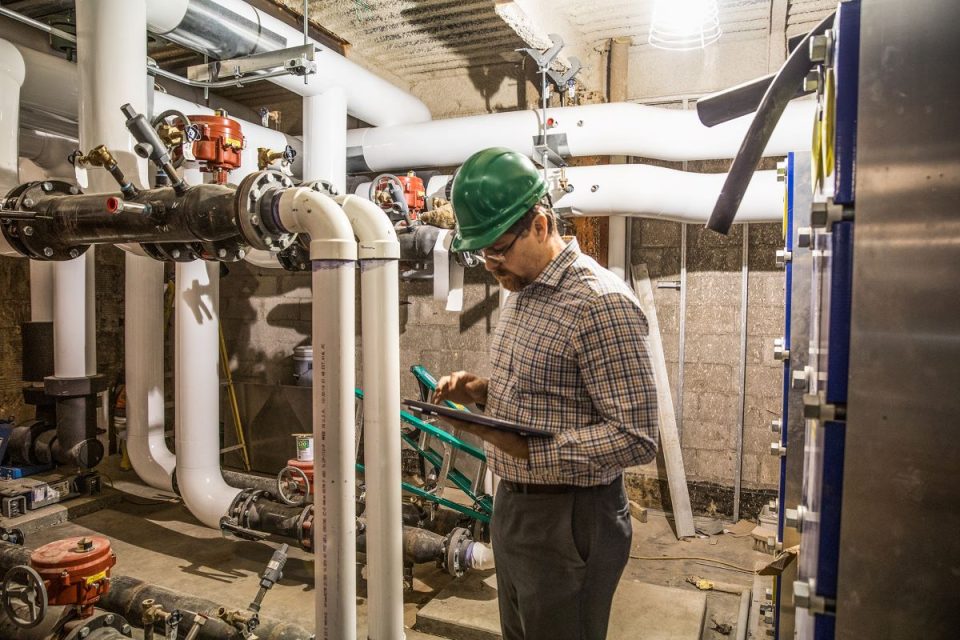According to Accenture, today we are in the era of ‘sustainable revolution’ – just as the digital revolution transformed how we live and work, so too will sustainability, driving new value and growth and permeating everything that we do. The first edition of the Net-Zero Industry Tracker report by the World Economic Forum stated that industrial sectors account for nearly 40% of global energy consumption and more than 30% of global greenhouse gas emissions. The transformation of these sectors is pivotal to reaching net-zero emissions by 2050.
For oil and gas industry sustainability makes a key priority, as they need to embrace new principles and processes to fight one of humanity’s main challenges. United Nations have adopted 17 Sustainable Development Goals (SDGs), and two of them greatly impacting oil and gas industries: “Affordable and clean energy” and “Climate action”. Due to great volume of responsibilities to regulatory bodies, the financial community, the investors, their clients and the civil society, many companies from oil and gas industry started implementing these goals into their operational processes. Worldwide, companies are responsibly moving the world forward to a net zero carbon future. Organizations across industries are under increasing pressure from stakeholders, regulators, and customers to report and manage the environmental impact of their business. Technology has an important role to play in executing sustainability strategy and helping the industry decarbonize.
Four steps to sustainable future
For starters, the companies need to establish a true baseline — understanding holistically the environmental footprint of the organization and value chain across all scopes: emissions that directly result from its business activities; emissions from producing energy such as electricity or heating and cooling; and indirect value chain emissions as a result of other business activities, such as building and construction materials or transport.
As a first step for building successful sustainability strategy, companies need better visibility to effectively drive sustainability reporting, sustainability efforts, and business transformation. For example, collecting and connecting IoT data from devices using sensors—combined with rich services at the edge or in the cloud—provides the basis to monitor and measure activities at scale. And now, Microsoft Sustainability Manager is enabling organizations to record emissions activities, report their impact and progress more efficiently, and reduce their environmental impact through increasingly automated data connections that deliver actionable insights to refine and scale sustainability initiatives.
Secondly, the companies should identify opportunities to replace tools, systems, or activities with more efficient options and add business value. A key place to begin is evaluating the company’s compute resource utilization, storage, and networking efficiencies. Simply migrating from on-premises cloud services to a hyperscale or to hybrid cloud have been shown to yield carbon and energy efficiency improvements. Transitioning workloads to Microsoft Azure can produce up to 98% more carbon efficiency and up to 93% more energy efficiency than on-premises options (depending on specific server usage, renewable energy purchases made, and other factors). How the company deploys and configures its IT tools can affect the environmental footprint of its systems.

Third step for sustainability strategy is to minimize the environmental footprint of company’s operational systems and processes. Integrated data solutions enable organizations to examine and manage the footprints of their facilities and production processes and shift the activities of their people to be responsive to the changing requirements of a sustainable economy. For example, the use of advanced technologies can enable autonomous operations that continuously maximize efficiencies of your building systems or manufacturing processes.
The fourth step is to facilitate greater transparency and accountability through value chain, from raw materials to product creation to distribution. Up to 90 percent of an average organization’s resource footprint occurs in the value chain—either upstream (through the supply chain) or downstream (in the product use phase) of its own operations. Without data, the companies can’t know the full impact of each supplier in their supply chain or understand the cost and climate impacts of changing suppliers. Digital technologies such as Microsoft Sustainability Manager can help organizations break down data silos across emissions sources and use a publicly available Microsoft Cloud for Sustainability data model, which can be shared with value chain partners to centralize emissions data in a common format. Thus, organizations facilitate greater transparency and accountability through their value chain to drive efficiencies, reduce emissions, and design out waste. Pairing that system of record with Enterprise Resource Planning (ERP) platform can enable companies to populate data and manage the supply chain more efficiently.
Proactive integrated sustainability strategies
Following the new requirements of the Oil and Gas industry, some energy companies have already started to pivot a huge part of their investment to production of renewables and have depreciated or divested some of their oil assets. Large corporations such as Shell, bp, and Chevron, some also operating in Kazakhstan, have launched ambitious action plans. With the right technology in place, innovative approach and strategic planning, energy companies can pivot rapidly to meet changing market demands and circumstances and achieve their sustainability goals.
“Shell is an outstanding example with their commitment to Goal Zero ambition of “no harm and no leaks” that feeds into broader initiatives like the U.N. Sustainable Development Goals. Shell turned to a mobile-friendly, integrated ESG and risk management platform, powered by Microsoft Azure, to improve the company’s already robust safety performance metrics. By leveraging the additional capabilities, Shell has advanced its safety initiatives through a streamlined, intuitive event-management process that offers an efficient way to capture quality health, security, safety and environmental data to drive learnings and help prevent incidents”, claims Microsoft’s Client Executive Gumyrbek Sandibekov.

Microsoft’s Intelligent Data Platform, that bp introduced as part of strategic partnership with Microsoft, brings together data from multiple cloud and on-premises sources, with Azure Synapse, advanced analytics, and IoT services to accelerate production of data products and train AI and machine learning models at scale. These capabilities also help bp track and manage carbon emissions and support its ambition to become a net zero company by 2050 or sooner and help the world achieve a net zero status.
With the right technology in place, innovative approach and strategic planning, energy companies can pivot rapidly to meet changing market demands and circumstances and achieve their sustainability goals.





